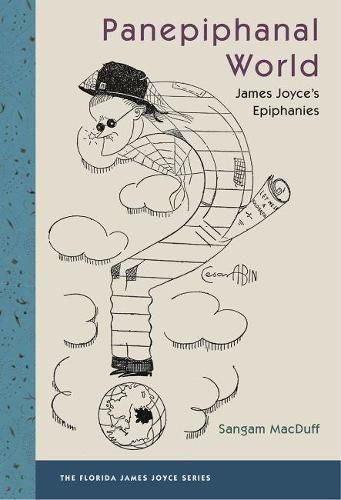Readings Newsletter
Become a Readings Member to make your shopping experience even easier.
Sign in or sign up for free!
You’re not far away from qualifying for FREE standard shipping within Australia
You’ve qualified for FREE standard shipping within Australia
The cart is loading…






This title is printed to order. This book may have been self-published. If so, we cannot guarantee the quality of the content. In the main most books will have gone through the editing process however some may not. We therefore suggest that you be aware of this before ordering this book. If in doubt check either the author or publisher’s details as we are unable to accept any returns unless they are faulty. Please contact us if you have any questions.
Panepiphanal World is the first in-depth study of the forty short texts James Joyce called epiphanies. Composed between 1901 and 1904, at the beginning of Joyce’s writing career, these texts are often dismissed as juvenilia. Sangam MacDuff argues that the epiphanies are an important point of origin for Joyce’s entire body of work, showing how they shaped the structure, style, and language of his later writings. Tracing the ways Joyce incorporates the epiphanies into Dubliners, A Portrait of the Artist as a Young Man, Ulysses, and Finnegans Wake, MacDuff describes the defining characteristics of the epiphanies-silence and repetition, materiality and reflexivity-as a set of recurrent and inter-related tensions in the development of Joyce’s oeuvre. MacDuff uses fresh archival evidence, including a new typescript of the epiphanies that he discovered, to show the importance of the epiphanies throughout Joyce’s career. MacDuff compares Joyce’s concept of epiphany to Classical, Biblical, and Romantic revelations, showing that instead of pointing to divine transcendence or the awakening of the sublime, Joyce’s epiphanies are rooted in and focused on language. MacDuff argues that the Joycean epiphany is an apt characterization of modernist literature, and that the linguistic forces at play in these early texts are also central to the work of Joyce’s contemporaries including Woolf, Beckett, and Eliot. A volume in the Florida James Joyce Series, edited by Sebastian D. G. Knowles
$9.00 standard shipping within Australia
FREE standard shipping within Australia for orders over $100.00
Express & International shipping calculated at checkout
This title is printed to order. This book may have been self-published. If so, we cannot guarantee the quality of the content. In the main most books will have gone through the editing process however some may not. We therefore suggest that you be aware of this before ordering this book. If in doubt check either the author or publisher’s details as we are unable to accept any returns unless they are faulty. Please contact us if you have any questions.
Panepiphanal World is the first in-depth study of the forty short texts James Joyce called epiphanies. Composed between 1901 and 1904, at the beginning of Joyce’s writing career, these texts are often dismissed as juvenilia. Sangam MacDuff argues that the epiphanies are an important point of origin for Joyce’s entire body of work, showing how they shaped the structure, style, and language of his later writings. Tracing the ways Joyce incorporates the epiphanies into Dubliners, A Portrait of the Artist as a Young Man, Ulysses, and Finnegans Wake, MacDuff describes the defining characteristics of the epiphanies-silence and repetition, materiality and reflexivity-as a set of recurrent and inter-related tensions in the development of Joyce’s oeuvre. MacDuff uses fresh archival evidence, including a new typescript of the epiphanies that he discovered, to show the importance of the epiphanies throughout Joyce’s career. MacDuff compares Joyce’s concept of epiphany to Classical, Biblical, and Romantic revelations, showing that instead of pointing to divine transcendence or the awakening of the sublime, Joyce’s epiphanies are rooted in and focused on language. MacDuff argues that the Joycean epiphany is an apt characterization of modernist literature, and that the linguistic forces at play in these early texts are also central to the work of Joyce’s contemporaries including Woolf, Beckett, and Eliot. A volume in the Florida James Joyce Series, edited by Sebastian D. G. Knowles